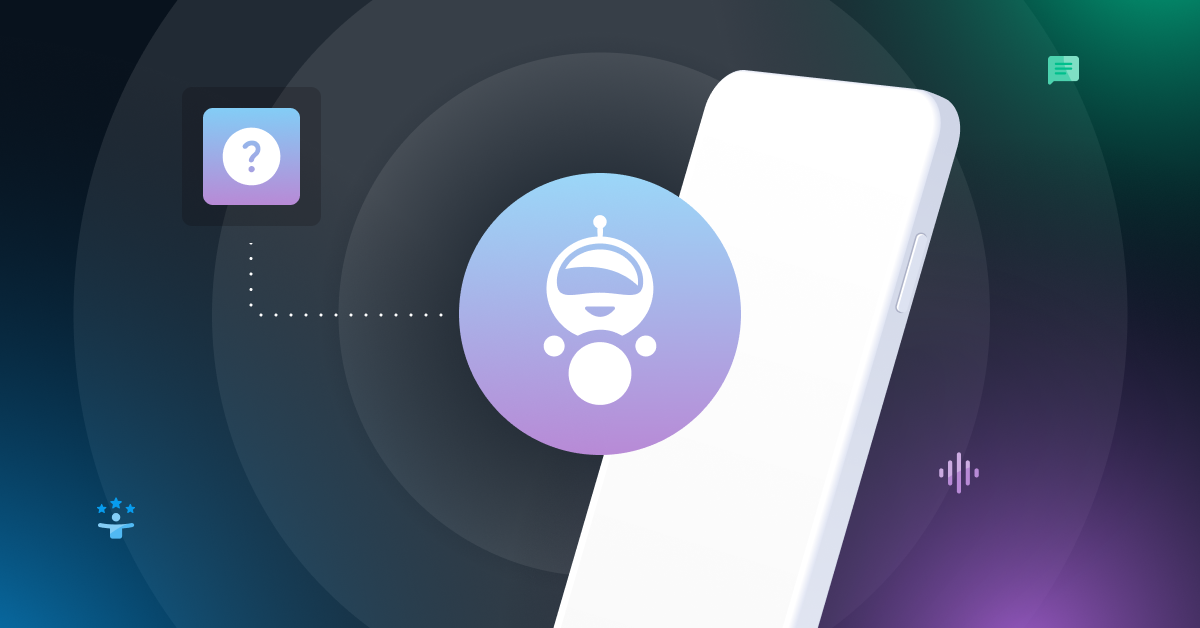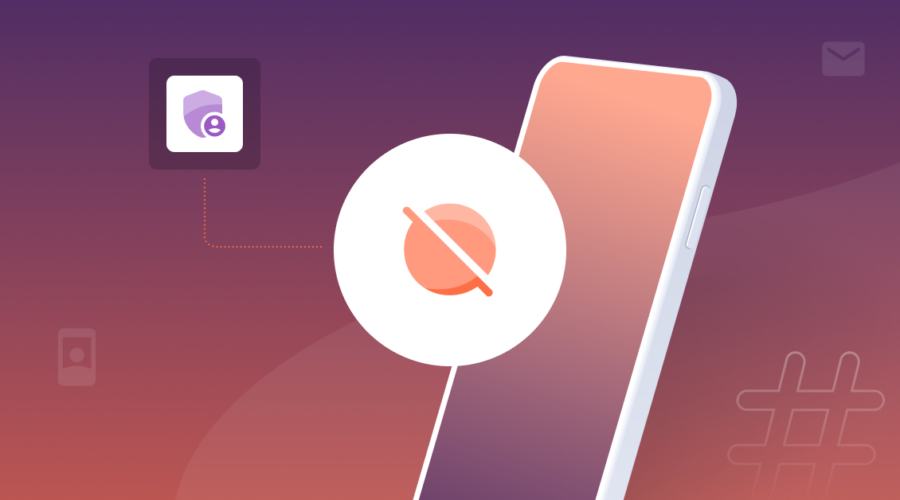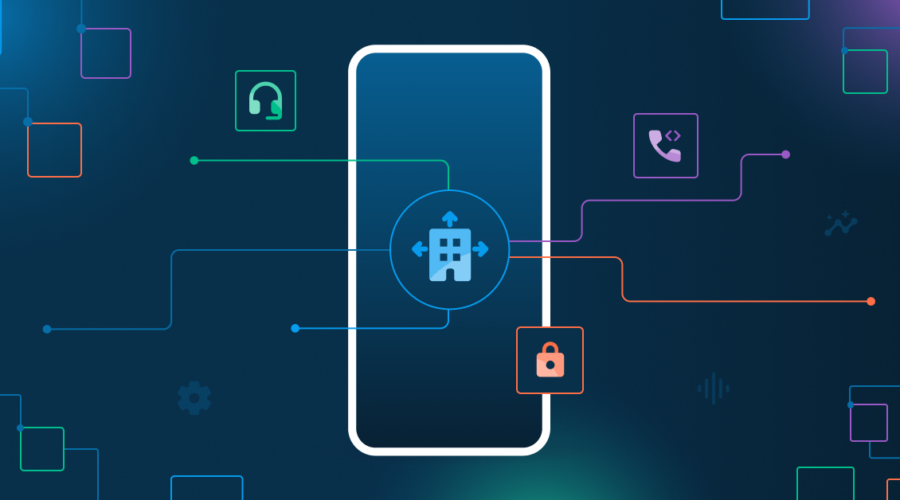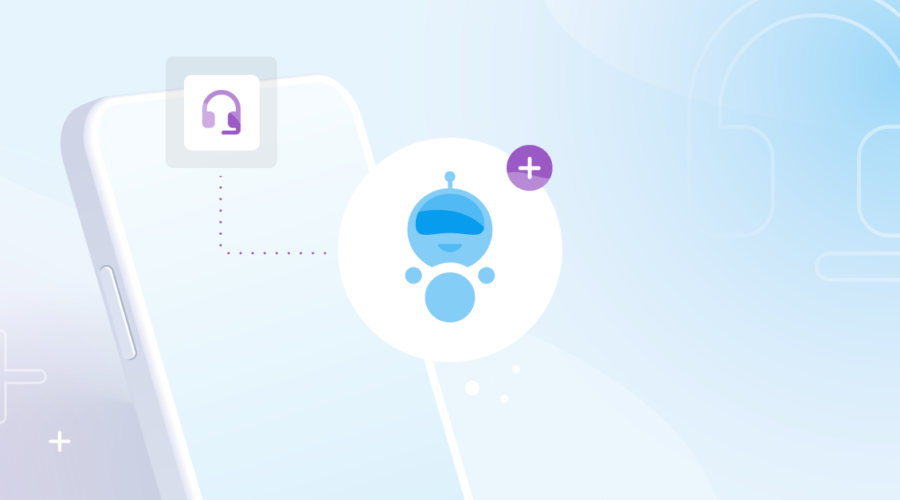Whether you’ve had to confirm a purchase you really made or cancel an account, you’ve likely had a frustrating experience (or two) with contact centers.
Artificial Intelligence (AI) can be a tool for good, using intelligent routing & natural language processing to help deliver more positive experiences for both customers and agents.
AI adoption has more than doubled, and the average number of AI capabilities an organization uses (like Natural Language Processing, or NLP) has also doubled from 2017 to 2022. Contact centers are not exempt from this trend, especially since customer experience (CX) is the biggest driver for AI adoption.
What is contact center AI?
Contact center AI (CCAI) is the application of AI technology in different layers of your contact centers. With an AI-enhanced contact center, CX leaders can enhance customer interactions, automate processes, improve agent productivity, and deliver personalized experiences at scale.
CCAI uses NLP, sentiment analysis, and machine learning (ML) to understand customer inquiries, provide intelligent responses, and offer proactive support. Implementing AI can transform how your agents and business work—and importantly, help you hit your contact center KPIs like average handle time (AHT) and first call resolution (FCR).
Benefits of AI in the contact center
Nobody can ignore the benefits of CCAI: the 2024 Enterprise Communications Landscape reveals that 92% of contact centers have plans to adopt AI/ML in 2024. Still, only two in five CX leaders feel they’re using AI well.
IT and business leaders are turning to AI with four end goals in mind—and they’re probably why you’re thinking about adding AI into your CX, too.
- Customer experience. Getting customers to the right agent who can quickly solve customer problems makes for happier customers (and agents). Virtual agents can be used to triage Tier-1 support issues, and intelligently route more difficult queries to the right support team. Contact centers are also using AI to become more inclusive and accessible with speech-to-text (STT) and text-to-speech (TTS) to support customers in different languages, even if the agent doesn’t speak that language.
- Increased revenue. AI can provide contextual information to agents or bots, enabling upsell or cross-sell opportunities. For example, if someone is on your website support chat and asking questions about a product, AI can identify upsell or cross-sell opportunities to expand profit for your business.
- Agent productivity. Automating simpler, routine tasks like password resetting, summarization, call scrubbing, call transcription, and offering the best next steps helps agents solve problems faster, handle higher workloads, and cut costs. Plus, virtual agents allow your live agents to become efficient, lower response times for web chat, and resolve complex issues faster.
- Lower costs. This goes hand-in-hand with improving agent productivity. Businesses can lower capital and operating costs by automating routine challenges, like password resets and account balance check-ins.
Three types of contact center artificial intelligence
AI isn’t new for contact centers or CX. There are many definitions and applications of AI for enterprises, and some are more refined than others. ChatGPT’s 2022 breakthrough created a race to implement AI capabilities within contact centers.
There are many definitions and applications of AI in the contact center. Let’s start by talking about what AI is within the contact center because there are many definitions of AI floating around.
Contact centers can apply AI in three different ways: agent optimization, conversational AI, and generative AI. Let’s break these down further.
Agent optimization
Agent optimization includes supporting agents by coaching them, potentially in real-time, and helping them with the optimization of inbound and outbound services.
Think of workflow management, agent coaching, intelligent call routing, and analytics based on an AI-based analysis of contact center engagement.
Use case: Data-backed insights
Agents need to get relevant information from customers while they’re helping them so future conversations are accurately documented and agents have context into the relationship.
Live transcription, topic analysis, sentiment analysis, and fraud detection can help agents better know your customer. On top of context setting, contact centers should use AI to authenticate caller identities via caller metadata.
Organizations are introducing AI-backed insights into their contact center via basic capabilities:
- Call data: Call transcription, translation, summarization, and listing out next steps.
- Call analysis: Sending a post-call survey where they can rate the quality of an experience often doesn’t get filled out. Instead, you can use AI to identify the tone of the call, and subliminal messages like words or voice can indicate the call experience.
- Customization: How can I suggest content that’s relevant to them?
- Storage and access: Can you store, access, and make sense of this call data?
Don’t forget: Implementing AI requires training for your agents and your AI tools.
Enterprise Communications Landscape 2024
Hear how 1,000 contact center leaders are improving their agent and customer experiences with AI.

Conversational AI
As AI becomes more embedded into the fabric of the contact center space, bots powered by conversational AI can enable self-service and workflow automation. These bots know who your customers are, have access to a knowledge base, and can address or solve some of the challenges you’re facing without ever speaking to a live agent.
Use case: Virtual agents
Virtual assistants are involved in nearly 39% of customer engagements. Out of those engagements, 42% of issues are resolved before customers reach a live agent. But what is it? A virtual agent (also called an ‘intelligent virtual agent’, ‘virtual representative’, or simply ‘chatbot’) is a software program that uses scripted rules and AI to provide automated service or guidance to humans.
Virtual agents are powered by conversational AI and allow your customers to have a ‘conversation’ with a bot to solve their needs. In contact centers, conversational AI can be used to provide the first step (or all) of the service for a customer call. It’s important to note that virtual agents aren’t replacing live agents—rather, this form of conversational AI augments your staff, improving agent experience and CX alike.
Generative AI
When you think of ‘generative AI,’ think about ChatGPT. Generative AI offers the ability to summarize calls and customer interactions, suggest action items during or after engagements, and perform real-time sentiment analysis. It’s offered by many competing providers and can come baked into your CCaaS platform or as a third-party tool.
Generative AI is still in the early stages of adoption, but businesses are already using generative AI to:
- Create content for live and virtual agents
- Summarize customer and internal calls
- Classify customer and sales interactions
- Create content for the end customer
Use case: Agent productivity
AI can help agents handle higher call volumes, and contact centers can scale to meet fluctuating demand without hiring and firing agents. On average, contact centers can save +$4 million in staffing costs (Metrigy).
Organizations are using generative AI to improve performance and productivity to:
- Create call summaries with generative AI
- Provide real-time Agent Assist
- Handle customer calls with virtual assistants
- Minimize after-call time with transcription
Top 9 ways contact centers are implementing AI
Across 600+ companies based in North America, Western Europe, Southeast Asia, and Australia, Metrigy found that nearly all organizations are currently using or plan to use AI by the end of 2023.
Here are the top 9 ways these organizations are using AI in their contact centers:
- Agent Assist: AI-driven insights and real-time suggestions to help human agents drive productive customer calls.
- Text analytics: AI can read chat or call transcriptions then analyze and summarize what was said, listing out key takeaways, and providing context for future agents.
- Translation: Transcription and analysis can help support customers in their native language, no matter what languages your agents or customers speak.
- Natural Language Processing (NLP): Used to interpret, comprehend, and respond to humans–think virtual agents like AI chatbots.
- Speech analytics: Understand, process, and analyze human speech to pull insights and customer sentiment.
- Conversational AI: Technology you can have a conversation with thanks to NLP, like virtual agents and chatbots.
- Transcription: Automatically record call details, freeing up agents for higher-value work.
- Predictive analytics: Anticipate customer and agent needs with suggested next steps, resources, and best practices.
- Sentiment analysis: Detect how customers are feeling, and what agents can do to improve experiences.
AI in Action: How AI is revolutionizing CX
Explore how you can use best-in-class AI/ML solutions to hit your contact center KPIs in our on-demand webinar.

How to add AI into your contact center
How can you implement these nine use cases in your customer experience? In the graphics below, the purple circles represent AI-led activities, and the blue circles represent agent-led activities.
In the first contact center engagement, the customer calls into an IVR and proceeds from there. A customer may not know the right team to reach out to via the IVR menu or new needs could be uncovered during the call, resulting in the caller being redirected to a new agent —perhaps multiple times.
Your agent may or may not receive feedback on how the call was handled, depending on if the customer opts to respond to a CSAT survey or if their advisor listens to the recording.
With artificial intelligence, you can upgrade your traditional IVR with a conversational voicebot, contain calls without ever involving a live agent, and resolve simple requests your voice bots can resolve independently.
For more complex calls, AI lets you skip finding the right department since your voice bot can understand the request and get the customer directed to the right team on the first try.
At the agent stage, the agent has many AI resources available to them:
- Historical context the caller already shared during the initial troubleshooting process,
- Sentiment analysis to detect the emotional state of who’s on the other end of the line, and
- Agent Assist to display the right responses and additional guidance as the customer’s problem more fully reveals itself.
From there, the agent and AI can work together to resolve the issue at hand. At the end of the call, feedback is near guaranteed with topic & sentiment analysis, providing crucial insights into caller satisfaction.
5 CCAI best practices for implementation
You’ve bought into conversational AI—now, you have to implement it. Here are tips to achieve a successful AI roll-out:
- Research vendors. Work with vendors to identify opportunities in your contact center, and what capabilities you can implement for quick wins & longer-term objectives. There are a lot of providers offering conversational, generative, and agent optimization. In addition, integrating with different conversational AI providers requires very specific rules and technological decisions.
- Test and measure. Set up pilots with before & after measurements to understand the impact of AI on your contact center KPIs.
- Stay compliant. Ensuring AI governance, security, and compliance with legal requirements and your organization’s internal policies is necessary since some of these tools may process biometric or other personal information. Choosing the right vendor and the right implementation for your use case is critical to protecting your customers.
- Stay on top of new developments. AI is moving quickly, and new trends are constantly emerging.
- Prepare for rapid change. Make sure you have the proper change management and employee training guardrails in place to roll out an effective, impactful AI strategy.
Get started with conversational AI
Whether you’re dipping your toes into the uncharted waters of voice AI or you’re fine-tuning your strategy, you already know AI is a CX must-have.
Once you’ve selected your vendor(s), how do you build this into your call flows? AIBridge offers plug-and-play elements that make it easier to integrate with and make changes to your call flows. With Bandwidth, you can choose the best-in-class, best-fit conversational AI provider for your organization with AIBridge’s pre-built integrations to TTS/STT providers.




